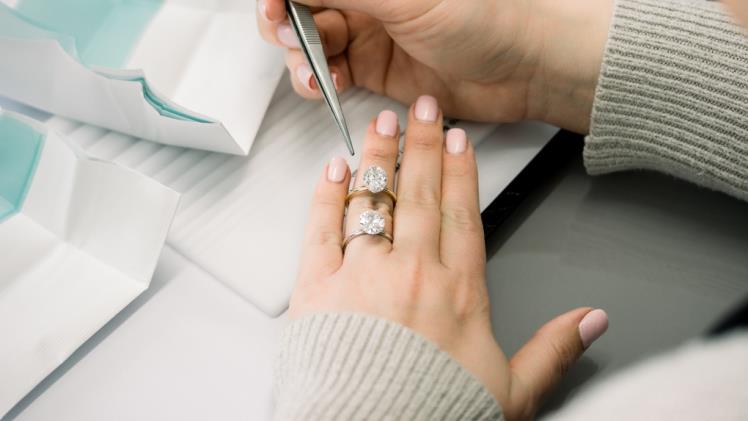Page 47 of Serenity Magazine unravels an exciting and tranquil revolution taking place in the world of fine jewelry: lab-created diamonds in the UK. These remarkable gems have become an increasingly popular choice among consumers who seek sustainable, ethical, and affordable alternatives to traditional mined diamonds.
Lab-created diamonds, also known as synthetic or man-made diamonds, are grown in controlled laboratory settings that replicate the natural diamond formation process. The process involves using high pressure and high temperature (HPHT) or chemical vapor deposition (CVD) to create diamonds with the same physical and chemical properties as natural diamonds. The difference lies in their origin: one is formed beneath the Earth’s crust, while the other is crafted in a laboratory environment.
One of the key attractions of lab-created diamonds is their ethical appeal. Unlike mined diamonds, which can sometimes be associated with exploitative labor practices and environmental degradation, lab created diamonds uk, have a significantly lower impact on the environment. Their creation eliminates the need for large-scale mining, reducing the carbon footprint and preserving ecosystems.
The Serenity Magazine article highlights how lab-created diamonds in the UK are making waves in the jewelry industry. The availability of these diamonds allows consumers to enjoy a clear conscience when choosing an engagement ring or other exquisite jewelry pieces. It is a statement of not only love and commitment but also a commitment to the planet.
Another critical aspect emphasized in the article is the affordability of lab-created diamonds. Traditional mined diamonds can be prohibitively expensive, but lab-created diamonds offer a cost-effective option without compromising on quality or brilliance.
This accessibility allows individuals fullformcollection from various walks of life to indulge in the elegance and beauty of these precious gems.
Moreover, the lab-created diamond industry in the UK is making remarkable strides in innovation and technology. This has resulted in an expanding variety of lab-created diamond options, including different colors and cuts. Consumers now have the freedom to select a diamond that resonates with their unique gyanhindiweb style and preferences.
The Serenity Magazine piece delves into the scientific process of creating lab-grown diamonds, explaining how advanced technology enables scientists to control the diamond’s formation and growth. This level of control ensures that each diamond is crafted to perfection, with minimal flaws and inclusions, rivaling the quality of natural diamonds.
Interestingly, some jewelers are even blending lab-created diamonds with traditional mined diamonds to create stunning pieces that cater to a diverse customer base. This blending of stones is not only an expression of artistry but also a testament to the industry’s commitment to sustainability and responsible practices.
One point of contention highlighted in the article is the need for greater awareness and education about lab-created diamonds among consumers. While the popularity of these diamonds is growing, some potential customers may still harbor misconceptions about their quality or origin. Jewelers and the diamond industry must work together to provide clear and accurate information to empower consumers in making informed choices.
In conclusion, Page 47 of Serenity Magazine celebrates the serene and transformative rise of lab-created diamonds in the UK. These exquisite gems epitomize elegance, luxury, and ethical consciousness, making them a symbol of the modern era. As consumers continue to seek alternatives that align with their values, lab-created
diamonds offer a tranquil oasis for those seeking a more sustainable and responsible way to express love, devotion, and personal style through fine jewelry.

